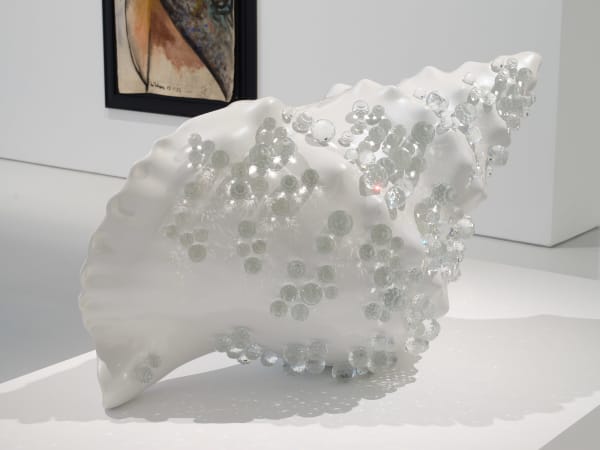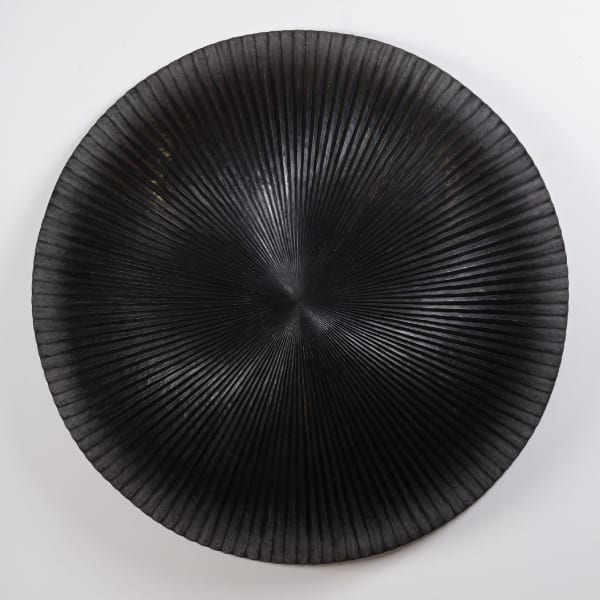This Must Be the Place: Inaugural Exhibition
This Must Be the Place showcases artwork that navigates the history and experience of Aotearoa and Oceania. Here, in stories told through contemporary visual language, This Must Be the Place presents a nuanced discourse on location, life, migratory journeys, and local history through the work of a diverse group of artists.
This Must Be the Place is the inaugural exhibition at Gow Langsford’s flagship Onehunga premises. It brings together the work of a diverse range of artists who respond to themes of place, belonging, and cultural legacy. In examining locality in Aotearoa and Oceania through a modern and contemporary lens, This Must Be the Place showcases a diverse range of practices and contextual frameworks from the region.
It includes work by artists represented by Gow Langsford – Laurence Aberhart, Brett Graham, Chris Heaphy, Hugo Koha Lindsay, Reuben Paterson, and John Pule; invited practicing artists – Ayesha Green, Areez Katki, Raukura Turei,and Dame Robin White; and late artists of contextual significance – Paul Dibble, Sally Gabori, Colin McCahon, and Teuane Tibbo.
Please note the library is open by appointment for research only. The artists studios are not publicly accessible and more information, and details on how to apply for a residency will be released when they launch in Spring 2024. Contact us with any queries.
-
 Shane Cotton, Te U Kai Po, 2023-24
Shane Cotton, Te U Kai Po, 2023-24 -
 Teuane Tibbo, Kava Ceremony, Fiji, 1967
Teuane Tibbo, Kava Ceremony, Fiji, 1967 -
 Teuane Tibbo, Garden Flowers I, 1976
Teuane Tibbo, Garden Flowers I, 1976 -
 Raukura Turei, Te Huka o te Tai , 2022
Raukura Turei, Te Huka o te Tai , 2022 -
 Chris Heaphy, Reading the Air, 2024
Chris Heaphy, Reading the Air, 2024 -
 Paul Dibble, The Quest for Immortality, 2023
Paul Dibble, The Quest for Immortality, 2023 -
 Areez Katki, Subsumption: it happens all the time, 2022
Areez Katki, Subsumption: it happens all the time, 2022 -
 Hugo Koha Lindsay, composition 10: with notations, additions and subtractions, 2023
Hugo Koha Lindsay, composition 10: with notations, additions and subtractions, 2023 -
 John Pule, Niniko Lalolagi, Dazzling World, 2004
John Pule, Niniko Lalolagi, Dazzling World, 2004 -
 Colin McCahon, Kauri, 1953
Colin McCahon, Kauri, 1953 -
 Ayesha Green, Mr. Wakefield, 2023
Ayesha Green, Mr. Wakefield, 2023 -
 Ayesha Green, Mr. Grey, 2023
Ayesha Green, Mr. Grey, 2023 -
 Robin White, Your Journey Starts Here, 2022
Robin White, Your Journey Starts Here, 2022 -
![Colin McCahon, [French Bay], 1959](data:image/gif;base64,R0lGODlhAQABAIAAAAAAAP///yH5BAEAAAAALAAAAAABAAEAAAIBRAA7) Colin McCahon, [French Bay], 1959
Colin McCahon, [French Bay], 1959 -
 Mirdidingkingathi Juwarnda Sally Gabori, Dibirdibi Country, 2010
Mirdidingkingathi Juwarnda Sally Gabori, Dibirdibi Country, 2010 -
 Reuben Paterson, Koro, 2023
Reuben Paterson, Koro, 2023 -
 Brett Graham, 90.000 N 135.000 W, 2021
Brett Graham, 90.000 N 135.000 W, 2021 -
 Laurence Aberhart, Taranaki Wanganui (17th November 2002), 2002
Laurence Aberhart, Taranaki Wanganui (17th November 2002), 2002 -
 Hugo Koha Lindsay, Figure revised no. 12 (with index and footnotes), 2022
Hugo Koha Lindsay, Figure revised no. 12 (with index and footnotes), 2022
-

Gow Langsford Thinks Big
Art Collector Article April 11, 2024Erin Irwin from Art Collector (Australia) features our newly opened flagship gallery in Onehunga. 'Auckland’s suburb of Onehunga now boasts an impressive new arts space,...Read more -
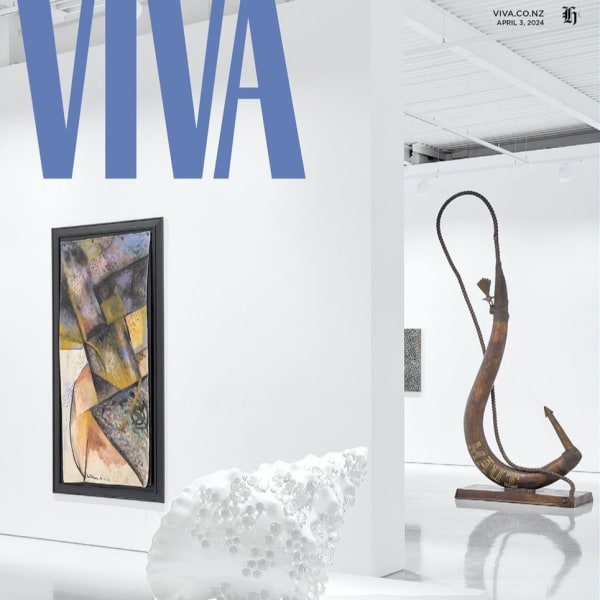
Gow Langsford Onehunga features as Viva Cover Story
April 4, 2024Viva journalist Johanna Thornton visited our new flagship gallery in Onehunga last week with the story adorning the cover of April 3rd Viva magazine in...Read more
-
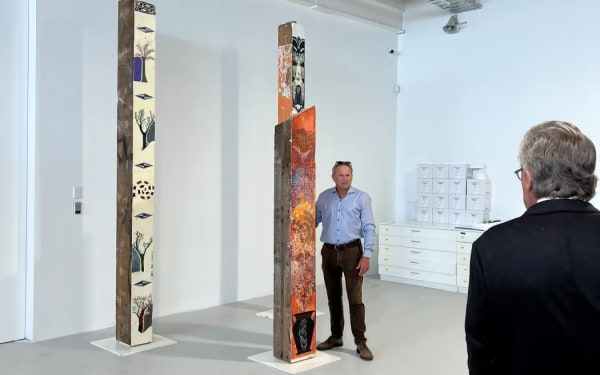
Director John Gow on Radio New Zealand
April 2, 2024Director John Gow spoke with Susana Lei’ataua on Radio New Zealand's Easter Monday special about the opening of our flagship gallery in Onehunga. Listen to...Read more -
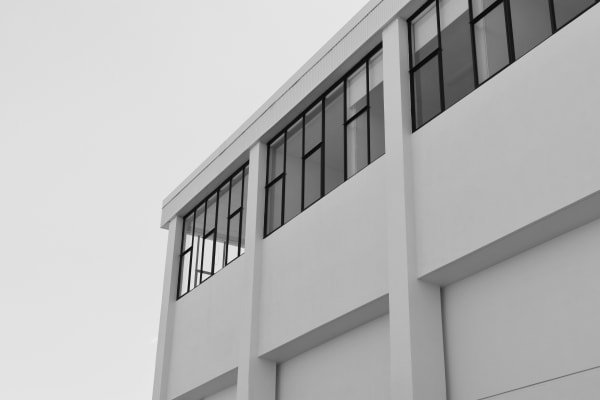
New Flagship Premises | Gow Langsford Onehunga
Opening 6 April 2024 March 20, 2024Gow Langsford Onehunga new flagship premises opening on 6 April 2024Read more
This Must Be the Place is the inaugural exhibition at Gow Langsford’s flagship Onehunga premises. It brings together the work of a diverse range of artists who respond to themes of place, belonging, and cultural legacy. In examining locality in Aotearoa and Oceania through a modern and contemporary lens, This Must Be the Place showcases practices and contextual frameworks from the region. Writer and academic Damon Selesa commented on the unique nature of this setting, stating, “The largest single feature in the world, fully one-third of its surface, is the Pacific Ocean. So vast that all the land in the world would fit inside its perimeter, the Pacific is virtually incomparable.”[1]
Historically, Oceania has not held a presence in cultural discourse proportional to its immense scale; widely circulated cultural histories have tended to be Euro- and Amero-centric. Salesa states, “[…] the history of Oceania seems, to those who know it, as rich in significance, complexity, achievement and human experience as any region on Earth. Yet outside of its bounds, and on the continents particularly, it is little known, marginalised, disavowed or excised. In world histories, as even in world maps, the biggest thing on Earth actually manages to be omitted or divided or occluded.”[2] In ways both subtle and overt, this has affected cultural and political discourses in Aotearoa and Oceania.
On the visual culture of this environment, writer Keith Stewart stated, “Western Oceania is at the very end of human lineage, the last place on earth to be colonised by homo sapiens, a fact that creates a deep root system of visual language that is the accumulation of journeys into the last corner of the Pacific from virtually every cultural homeland on earth.”[3] As Stewart observes, specificity of location and nature of place have been a factor in shaping contemporary visual culture in this part of the world. Here, in stories told through contemporary visual language, This Must Be the Place presents a nuanced discourse on location, life, migratory journeys, and local history.
Hardwired into this is the migratory nature of peoples in this part of the world. In their publication for the Royal Academy of Arts exhibition Oceania, curators Peter Brunt and Nicholas Thomas wrote, “Twentieth-century migration entailed inherent dislocation, from cultural milieux as well as from place. Sea-level rise among other aspects of environmental change now threatens Island homes. Commemoration, loss and the struggle to retrieve place, identity and history have become central themes for the artists of the new Oceania.”[4] Reclaiming a sense of place, and reconnecting with the wairua of the land have become vital concerns of artists operating within this cultural context.
This Must Be the Place presents artwork that navigates the history and experience of Aotearoa and Oceania. It includes work by artists represented by Gow Langsford – Laurence Aberhart, Shane Cotton, Brett Graham, Chris Heaphy, Hugo Koha Lindsay, Reuben Paterson, and John Pule; invited practicing artists – Ayesha Green, Areez Katki, Raukura Turei,and Robin White; and late artists of contextual significance – Paul Dibble, Sally Gabori, Colin McCahon, and Teuane Tibbo.In their own ways, each of these artists have created work specific to Aotearoa and Pacific contexts. They respond uniquely to the history, cultural legacies, environment, and identity of this extraordinary part of the world.
[1] Damon Salesa, “The World from Oceania”, in An Indigenous Ocean: Pacific Essays (Wellington: Bridget Williams Books, 2023), page 51.
[2] Ibid, page 51.
[3] Keith Stewart, “String Theory: The Heaphy Continuum”, in Chris Heaphy: Daisy in My Lazy Eye (Hong Kong: Plum Blossoms International), 2008.
[4] Oceania, Editors Peter Brunt and Nicholas Thomas (London, Royal Academy of Arts, 2018), page 262.







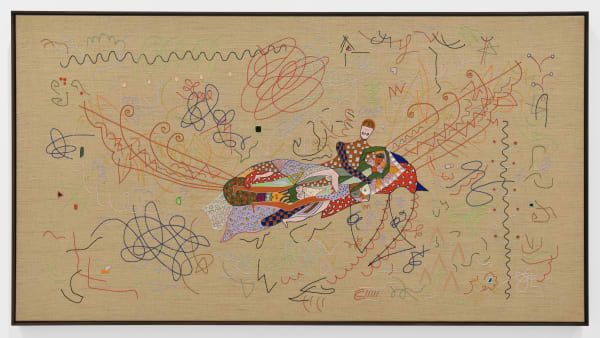






![Colin McCahon, [French Bay], 1959](https://artlogic-res.cloudinary.com/w_600,c_limit,f_auto,fl_lossy,q_auto/artlogicstorage/gowlangsford/images/view/67fafdd0347a11655316349b0b9a5eb6j/gowlangsford-colin-mccahon-french-bay-1959.jpg)

